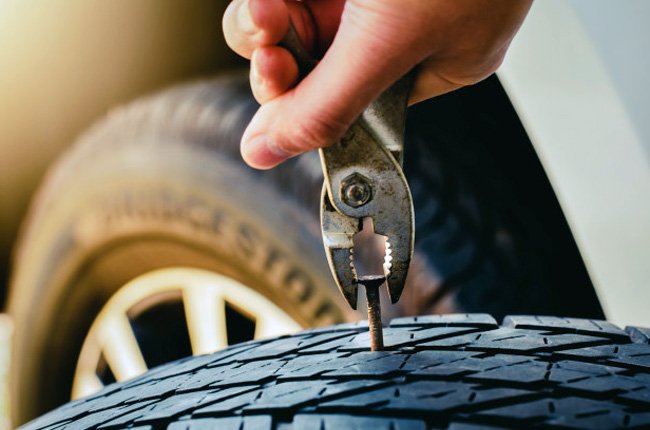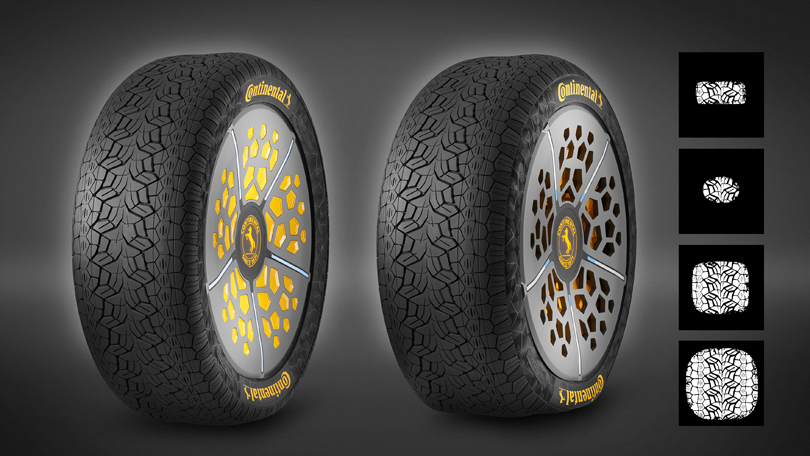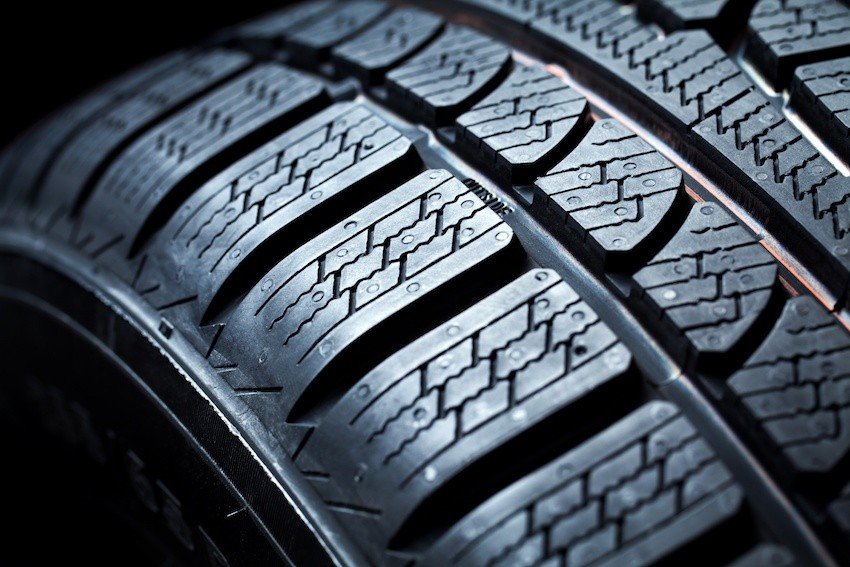Daniel Davidson, MD, MBA, DBA, PHD
Introduction:
Vehicle damage, accidents, and sometimes even injuries or fatalities can result from tire failure, which can be a serious safety hazard on the road. Still, drivers may reduce the risk of tire failure and handle such circumstances well when they arise with appropriate precautions and preventive actions. With the goal of ensuring safer and more dependable driving, this article examines several methods for preventing and handling tire failure.
Regular Tire Maintenance:
Ensuring maximum performance, lifespan, and road safety requires routine tire maintenance. Key elements of routine tire care include the following:
Tire Pressure:
For best efficiency and safety, tires must be properly inflated. Reduced fuel efficiency, uneven tire wear, higher rolling resistance, overheating, and even tire failure can result from underinflated tires. In contrast, excessive tire inflation may cause uneven tread wear in the middle of the tire, decreased traction, and a rough ride. As stated in the owner’s manual or on a label located inside the driver’s side door jamb, drivers should use a tire pressure gauge to check and inflate tires to the manufacturer’s suggested pressure levels.
Tread Wear:
Especially in rainy or slick circumstances, the tread depth of tires is vital to retaining traction and grip on the road. Tire performance and safety can be severely hampered by worn-out tread, which also raises the possibility of hydroplaning and losing control. Utilizing a tread depth gauge or the penny test—which involves inserting a penny into the tread groove with Lincoln’s head facing down—drivers should check the tread depth of their tires on a regular basis. If the top of Lincoln’s head is visible, the tread depth is too low. To maintain safe driving conditions, tires with insufficient tread depth should be replaced right away.
Tire Rotation:
Tires last longer and wear more evenly when they are rotated on a regular basis. Due to things like steering and braking forces, front tires typically wear out faster than rear tires. Tire rotation helps drivers maximize tire longevity and maintain consistent performance by ensuring that all tires wear equally, which normally happens every 5,000 to 7,000 miles.
Wheel Alignment:
When wheels are aligned correctly, they are perpendicular to the road surface and correctly positioned with respect to each other. Wheel misalignment can impair vehicle stability and safety by resulting in uneven tire wear, steering pull, and handling problems. To guarantee correct vehicle alignment and tire wear, drivers should get their wheel alignment checked frequently, particularly after hitting curbs or potholes.
Visual Inspection: Performing routine visual examinations of tires can assist in spotting damage indicators that could jeopardize their safety and integrity, such as cuts, bulges, fractures, or punctures. In order to stop additional damage or tire failure, drivers should physically inspect their tires for any anomalies or damage, including sidewall damage or embedded items. Any problems should be swiftly addressed.
Tire Rotation and Alignment:
Basic maintenance procedures like tire rotation and alignment support long-term tire performance, overall vehicle safety, and both. Here’s a closer examination of these methods:
Tire rotation:
This is the process of routinely shifting each tire’s location on the car from one to another. Tire rotation is done to make sure all tires have equal wear, which extends tire life and encourages better balanced handling and traction. There are some frequently utilized rotation patterns:
Front-to-Rear:
In this pattern, the rear tires are moved diagonally to the front positions, while the front tires are moved straight back.
Cross rotation:
In the cross rotation pattern, the front left tire moves to the rear right position and vice versa. The front and rear tires are crossed diagonally.
Tires are rotated from side to side in cars with differing tire sizes on the front and back axles to encourage uniform wear.
According to variables including tire type, vehicle setup, and driving circumstances, tire manufacturers usually advise on particular rotation schedules. Drivers may extend the life of their tires and ensure consistent performance by rotating them on a regular basis, usually every 6,000 to 8,000 miles.
Wheel alignment:
Tire alignment is another name for wheel alignment, which is the process of altering the angles of the wheels to make sure they are perpendicular to the ground and parallel to each other. Optimal tire wear, steering responsiveness, and vehicle handling are all ensured by proper wheel alignment. Common modifications to alignment consist of:
Toe:
When viewed from above, toe alignment describes the angle of the tires in relation to one another. In order to minimize tire scrape and uneven wear, toe can be changed to ensure that the tires are parallel to one another.
Camber:
When looking at the tires from the front or back of the car, camber alignment describes how the tires are angled in relation to the vertical axis. Appropriate camber angles aid in uniformly distributing weight among the tires and avert excessive wear on the inner or outer surfaces.
Caster:
From the side of the car, the angle of the steering axis is known as the “caster alignment.” In order to ensure responsive handling and straight-line stability, proper caster angles enhance stability and steering sensation.
Regular wheel alignment checks are recommended, particularly following collisions with potholes, curbs, or other large road obstacles that may cause alignment settings to be upset. Uneven tire wear, steering pull, and decreased vehicle safety can all result from misaligned wheels.
Avoid Overloading:
To preserve tire performance and safety, overloading must be avoided. Tire failure, including blowouts and tread separation, is more likely when a vehicle is loaded above its designated weight restrictions. This is because the tires are subjected to severe strain. In order to maintain a safe handling of vehicle maneuvers and maintain a firm grip on the road, tires that are overloaded are more likely to overheat and to wear down more quickly.
Following the recommended weight capacities of the automobile manufacturer—which are usually listed in the owner’s handbook or on a placard inside the glove compartment or driver’s door jamb—will help drivers avoid overloading. The weight of the cargo, which includes any towing loads, luggage, and equipment, must also be taken into account in addition to the weight of the passengers.
Drivers should make sure their vehicle is not above its maximum permitted weight before setting out on a journey by carefully weighing all of the passengers and goods combined. To lighten the load and get it within the vehicle’s weight restrictions, objects may need to be shifted or taken out entirely.
Drivers can contribute to ensuring that their tires run within safe parameters, lowering the risk of tire failure and promoting safer driving conditions for themselves and other road users, by avoiding overloading and maintaining adequate weight distribution
Defensive Driving Techniques:
In order to lower the chance of collisions and encourage safer driving habits, drivers utilize defensive driving techniques, which involve anticipating and responding to possible risks while driving. Keeping control of the car, preventing crashes, and safeguarding both oneself and other road users are the key goals of these strategies. Among the typical methods of defensive driving are:
Maintaining a safe following distance:
It’s essential to leave enough space between your car and the one in front of you to react quickly to any stops or deviations in the flow of traffic. The standard following distance under normal driving conditions is three to four seconds; however, in inclement weather or on poorly maintained roads, this may need to be extended.
Scanning the Road Ahead:
By keeping an eye out for potential hazards like potholes, debris, or other cars that could be dangerous, drivers can avoid accidents. Drivers can prevent accidents or safely negotiate obstacles by being alert and anticipating possible threats.
Avoiding Distractions:
To keep your focus and attention while driving, put an end to distractions like cell phones, GPS systems, and other electronics. Distractions cause a driver to take their eyes off the road, which raises the possibility of an accident and slows their reaction times.
Using Turn signals:
Turn signals should be used correctly to let other drivers know what you want to do and to adjust their own driving. A smooth traffic flow is maintained and the chance of misunderstandings or collisions is decreased by signaling your intentions before changing lanes, turning, or merging into traffic.
Respecting Speed Limits:
Staying within the posted speed limits preserves control of the car and gives you enough time to react when unanticipated dangers arise. Defensive driving tactics become less effective when someone speeds, which raises the possibility of accidents.
Being Aware of Blind Spots:
To prevent crashes with cars that might not be apparent in your mirrors, use your mirrors to check your blind spots and make shoulder checks before changing lanes or making any other actions. Being mindful of blind areas reduces the risk of collisions resulting from lane changes or merging.
Predicting Other Drivers’ Behavior:
Reckless drivers predict other drivers’ behavior and modify their driving style accordingly. This entails keeping situational awareness and being ready to respond rapidly in order to be ready for abrupt lane changes, unpredictable stops, and unpredictable driving behavior.
Emergency Preparedness:
One of the most important parts of tire safety and general car maintenance is being ready for emergencies. By being ready for tyre-related crises, drivers can reduce the likelihood of accidents or travel schedule interruptions while managing unforeseen circumstances on the road. The following are essential elements of tire-related emergency preparedness:
Carrying Necessary Tools:
Motorists should make sure they have the gear and instruments needed to handle situations with tires. This includes supplies like a tire repair kit, lug wrench, jack, and spare tire. When drivers have these equipment easily available in their car, they can swiftly take care of little tire problems or replace a flat tire when necessary.
Understanding How to Change a Tire:
Drivers must be conversant with the procedure for changing a tire. Changing a tire correctly and safely can speed up the operation and reduce downtime, even if roadside help is not needed. To make sure they are equipped to change a tire in an emergency, drivers should practice in a controlled setting.
Keeping a Spare Tire on Hand:
Being prepared for emergencies requires having a spare tire that is regularly inflated and maintained. To make sure their spare tire is prepared for usage in the event of a flat or damaged tire, drivers should routinely check its condition and inflation.
Having a roadside assistance plan can give drivers piece of mind in more serious or difficult situations, even while they should be ready to manage minor tire concerns on their own. Tire-related failures can be less stressful and inconvenient when roadside assistance services are available to aid with tire changing, towing, and other emergency services.
Keeping Emergency Supplies:
Drivers ought to think about keeping a basic emergency kit in their car in addition to tools and equipment designed specifically for tires. Items like a flashlight, batteries, first aid supplies, flares or reflective triangles, non-perishable food, and water might be included in this kit. These items come in quite handy in a variety of emergency scenarios, including tire problems.
Sustaining Communication:
In the event of an emergency, drivers should make sure they have a dependable way to get in touch. Drivers can convey their location to emergency responders and request assistance by carrying a charged cell phone or having access to a vehicle emergency communication system.
Proper Response to Tire Failure:
When a tire fails while driving, it is critical to react quickly and responsibly to preserve your own and others’ safety on the road. Here are some important steps to follow when you have a tire failure.
Be Calm:
It’s natural to feel surprised or anxious when a tire fails, but it’s critical to be calm and steady. Panicking might impede your ability to make sound decisions and maintain effective vehicle control.
Maintain Control:
Maintain a firm hold on the steering wheel and focus on keeping the vehicle under control. Avoid making abrupt or jerky motions that could further unsettle the vehicle.
To gradually lower speed, ease off the accelerator pedal. Avoid slamming on the brakes, since this may cause the vehicle to skid or lose control, especially if the tire fails on a front wheel.
Steer Straight:
Keep the car traveling as straight as possible, especially if the tire fails on the back wheel. Steer carefully and smoothly to avoid overcorrection or swerving into other lanes.
Turn on your hazard lights to inform other cars of the emergency situation. This will improve visibility and lower the chance of colliding with other vehicles.
Assess the Situation:
After you’ve safely brought the car to a halt, evaluate the degree of the tire damage and the surrounding conditions. If it is safe to do so, exit the car and examine the tire for signs of punctures, blowouts, or other damage.
Call for Assistance:
If you are unable to change the tire yourself or if the damage is severe, contact roadside assistance or emergency services for assistance. To expedite assistance, offer your location and a detailed description of the incident.
Change the Tire:
If you have the proper tools and equipment, you can try to change the flat tire using the spare tire. When raising and fastening the car, follow the manufacturer’s directions and proceed with caution.
Proceed with Caution:
Once the tire has been replaced or repaired, exercise caution and avoid driving at high speeds until you are satisfied that the vehicle is safe to drive. Monitor the mended tire for any more problems and consider getting it inspected by a professional mechanic as soon as possible.
Tire Replacement:
When tires exhibit signs of excessive wear, damage, or aging, they should be replaced right away to ensure vehicle safety and performance. Drivers should check their tires on a regular basis and consult with a certified technician to determine when they need to be replaced based on mileage, age, and visual inspection.
Conclusion:
To lower the risk of accidents and improve road safety, drivers should use these tactics to prevent and manage tire failure. Regular maintenance, defensive driving techniques, and emergency readiness are all important aspects of tire safety that every driver should consider for a safer driving experience.







